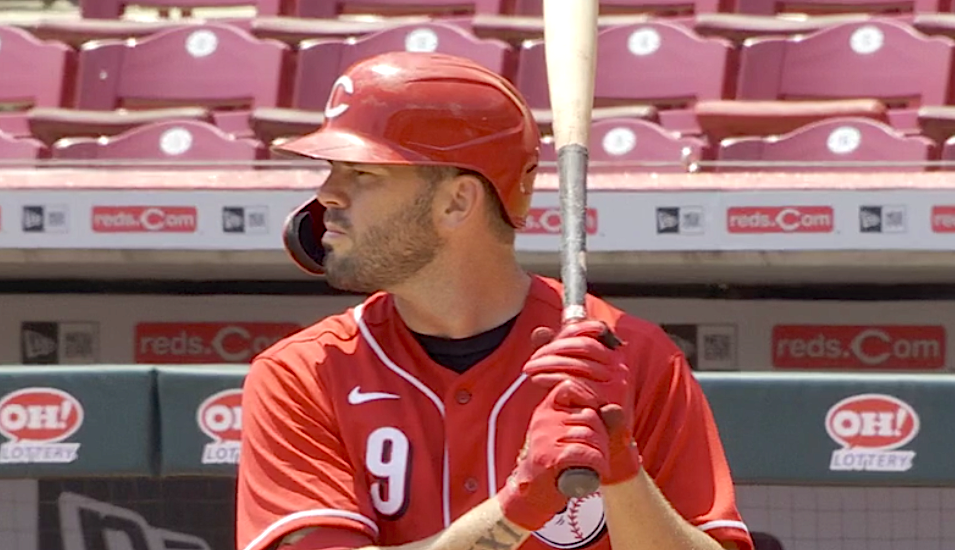
In the offseason that preceded the pandemic-shortened 2020 season, the Reds made a flurry of moves in the free agent market to bring the team back into contention. One of the first moves was to sign free agent, Mike Moustakas, to a four-year, $64 million contract. He had just come off an All-Star year in which he’d posted a slash line of .254/.329/.516 and a wRC+ of 113. The plan was to slide Moustakas to second base, with Eugenio Suarez locking down third. The Moustakas signing was followed by Shogo Akiyama, Nick Castellanos and Wade Miley.
Unfortunately for Cincinnati and Moustakas, things simply didn’t work out. Due to poor performance and injuries, Moustakas struggled to contribute on the field. He ended up missing over half of the regular season games and totaled a bWAR of -1.0 and a wRC+ of 76 in 2022. His batted ball metrics were atrocious as well, posting an xBA of .195 and an xSLG of .307, suggesting that this performance is likely indicative of what could be expected from him moving forward.
You might say that signing him was a $64 million Moose-stake (Bdumm-tss!).
When he didn’t show up for the 2022 Redsfest, many fans saw the writing on the wall and knew that Moose would most likely not be suiting up as a Red in 2023. In order to create a roster spot on their 40-man roster for returning catcher Curt Casali, the Reds designated Mike Moustakas for assignment. This move came after multiple years where his name was regularly mentioned in trade rumors, as the team looked to shed his large guaranteed salary. Ultimately, no deals were made. Unless the Reds can find a trade partner in the next week, he’ll be released and paid the remaining $22 million on his contract ($18 million salary and $4 million buyout).
The first signing for the 2020 all-in playoff push would end up being the last one to leave the team.
Here is what Nick Krall had to say about the move:
“We had to look at it more for what our team is next year. We’re already paying him. Who is the best fit for our team moving forward. It was a tough decision. They are all tough decisions. They are decisions made about good people and they are career-altering decisions for them. I just think for us, we had to make sure we’re making the best decision for our organization.”
It made no sense to keep Moustakas on the roster. He had become a liability on the field, and his bat and his playing time can now be given to a younger player who could be part of the next good Reds team. It’s also a (slightly) encouraging sign that the Reds were willing to part ways with Moustakas. In past years, underperforming Reds players with large salaries saw regular playing time, due to the hefty financial commitment from the team.
Although his time in Cincinnati did not go as hoped, I wish Moose and his family the very best. I was a fan of Moustakas before he came to the Reds, and I will continue cheering for him wherever he ends up next.


